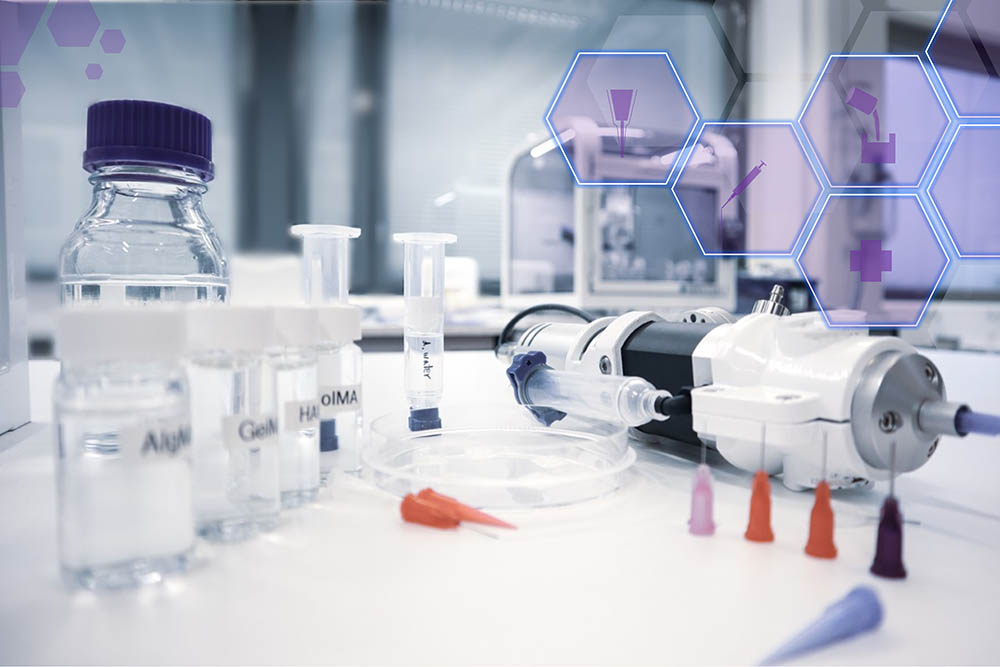Brinter Launches Upgraded Pneuma Triaxial Pro “Digital Pneuma Pro“ Bioprinting Head Capable Of Doing Microfluidic Manipulations To Enable More Personalized Tissue Cell Therapy And Transform How Diseases Are Treated

Currently being piloted with selected customers, the new 3D bioprinting head provides a revolutionary approach to regenerative medicine and replacing lost biological functions.
Turku, Finland (June 22nd, 2022) Finnish 3D bioprinting scaleup Brinter has today announced the launch of its Digital Pneuma Pro print head for its Brinter bioprinters. This latest development means academics and pharmaceuticals can test and develop more personalized treatments for intricate tissue engineering and cell therapy, such as repairing damaged tissue, replacing lost biological functions, and localized therapeutic solutions for the treatment of disease. Overall, the technology enables more precise healing effects with fewer side effects for patients.

The new Digital Pneuma Pro print head can recreate the precise architecture of living human cells using multiple materials and dispense a combination of various materials in the same print job using microfluidic manipulation. Due to the device’s modularity, it is possible to make modifications to the hardware to accommodate the combinations needed, such as temperature control or imaging options. Without this modular approach, new devices would need to be bought for every function like granulate, paste extrusion, fluidic manipulation or liquid dispensing.
“The key to bringing this new series was the accumulated experiences of our team members utilizing our proprietary hardware architecture, software and fluidic automation system knowledge to make complex fluidic circuits, which have near-zero dead volumes to save resources and to avoid cross-contamination with other materials,” says Tomi Kalpio, CEO of Brinter.

Brinter’s flagship model Brinter One is a modular bioprinter that is able to print multi-material and highly complex tissue structures in 3D, providing all the basic features needed for bioprinting. The device can print both stiff and soft materials, including but not limited to liquids and hydrogels with living cells, bio-paste, metal with a binder material, and plastic, while being easy to pack up and set up in a different lab or cleanroom in minutes.

Previously, expensive hardware, steep software learning curves and limitations, and process control have limited the efficiency of research for bioprinted cell therapeutics.
“We are bridging the gap between micro/nano/pico/femto fluidic environments and the bioprinting environment, which gives users the precision to control the material which is being manipulated for various use cases – from generating gradience to programming the cells in the droplets to make personalized drugs or functional materials to target cancer or heal/regenerate the tissues,” concludes Kalpio.
To date, Brinter is currently active in over 10 countries, including the USA, Germany, India, and the UK. The company recently launched its new entry-level model, Brinter Core, to make bioprinting more affordable and accessible to researchers and manufacturers for uses that range from personalized drugs to human spare parts.
Customers of Brinter include bio and pharmaceutical companies like Bayer and Nanoform, as well as research organizations like VTT, BEST group at the University of Glasgow, Johannes Gutenberg University of Mainz, the University of Oulu, University of Turku, Åbo Akademi, Tampere University, and the University of Helsinki.
About Brinter

Founded in 2020 via partial demerger in Turku, Finland, Brinter is a trailblazing Finnish bioprinting company providing comprehensive 3D bioprinting solutions and services for pharmaceutical, biotechnological and cosmetic industries, universities, and research facilities. Brinter is a modular multi-material bioprinting platform scalable from manual R&D to automated production. The company works with science and bioengineering organizations to integrate 3D bioprinting into their research, manufacturing, and treatment methods. The goal is to break through current technological limitations and improve people’s quality of life. For more information, visit www.brinter.com.
